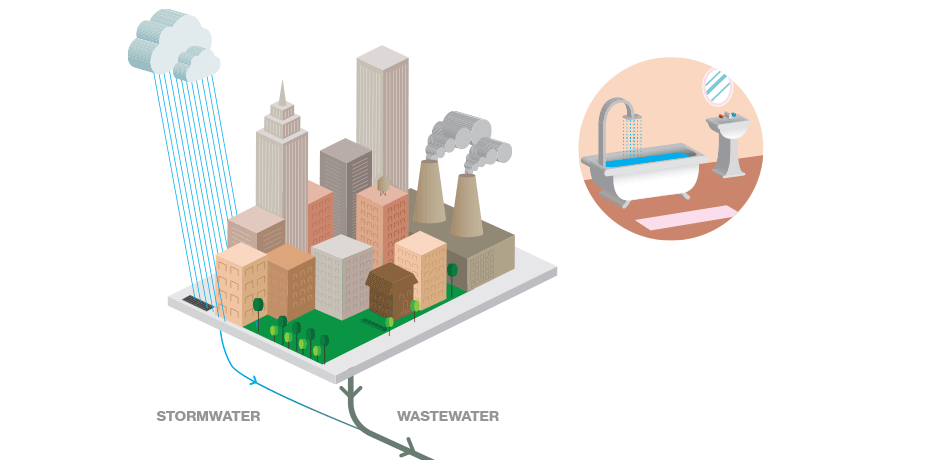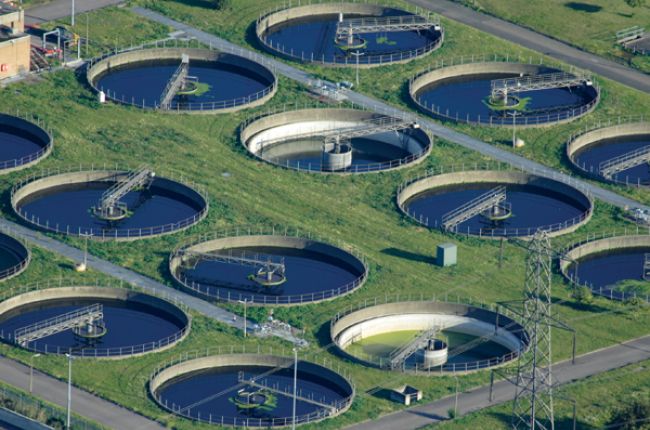Cost-Effective Solutions for Large-Scale Waste Water Treatment Facilities
Cost-Effective Solutions for Large-Scale Waste Water Treatment Facilities
Blog Article
Optimizing Drainage Therapy Procedures: Methods for Improved Water Top Quality and Source Recuperation
In the world of wastewater treatment, the mission for enhancing efficiency and sustainability via process optimization is a recurring search that holds immense importance. By focusing in on techniques customized to raise water high quality while all at once utilizing beneficial resources, treatment plants can attend to pressing ecological worries while opening economic advantages. From advanced modern technologies to cutting-edge resource healing techniques, the landscape of wastewater therapy is advancing swiftly. As we delve right into the ins and outs of enhancing these procedures, a world of possibilities emerges that assures not only cleaner water yet likewise a more lasting future.
Relevance of Refine Optimization
Maximizing waste water treatment procedures with precise procedure optimization is essential for maximizing performance and making sure ecological sustainability. By fine-tuning each step of the therapy process, from preliminary consumption to final discharge, water treatment facilities can achieve greater degrees of contaminant removal, lower energy usage, and decrease the generation of waste byproducts. Refine optimization entails assessing crucial efficiency signs, such as hydraulic retention times, sludge retention times, and nutrient degrees, to recognize areas for improvement and implement targeted remedies.
Efficient process optimization not only improves the total efficiency of waste water treatment plants but also adds to set you back savings and governing compliance. By enhancing procedures, operators can attain greater therapy capabilities without the need for substantial framework financial investments. In addition, boosted treatment performance results in cleaner effluent discharge, lowering the ecological influence on getting water bodies and ecosystems.

Advanced Treatment Technologies
In the world of drainage treatment, the implementation of sophisticated therapy innovations plays a critical function in enhancing the general effectiveness and effectiveness of the treatment procedures. These sophisticated innovations supply cutting-edge services to deal with complicated pollutants existing in wastewater streams, making certain the removal of contaminants to meet strict water top quality standards. Advanced treatment processes such as membrane layer bioreactors, ozonation, advanced oxidation processes, and turn around osmosis allow the complete elimination of contaminants, consisting of arising pollutants like pharmaceuticals and individual treatment items.
Moreover, these modern technologies assist in source recovery by drawing out important products such as phosphorus, nitrogen, and power from the wastewater. Progressed nutrient elimination innovations can recuperate phosphorus and nitrogen for reuse in agricultural fertilizers, while energy recovery systems like anaerobic food digestion can harness biogas for electrical energy generation. By integrating advanced treatment innovations into wastewater treatment plants, drivers can improve water top quality, lower ecological influence, and relocate in the direction of a much more sustainable and resource-efficient approach to wastewater monitoring.
Source Recovery Techniques
Source healing methods in wastewater treatment procedures play an important duty in taking full advantage of the application of beneficial sources had within wastewater streams. These methods aim to extract and reuse products such as nutrients, energy, and water from the wastewater, turning what was as soon as thought about waste into valuable resources. One typical resource healing strategy is the extraction of nutrients like phosphorus and nitrogen from wastewater for reuse as plant foods or in industrial processes. Furthermore, energy recuperation approaches such as anaerobic digestion and biogas manufacturing help harness the energy capacity of raw material in wastewater to generate power or warmth.
Water healing methods, such as membrane modern technologies and advanced filtration systems, make it possible for the therapy and reuse of water reference for non-potable applications like watering or commercial procedures. By applying source recuperation techniques in wastewater treatment plants, not just can valuable resources be preserved and reused, but the total sustainability and efficiency of the therapy procedure can be substantially boosted. As the concentrate on source deficiency and ecological sustainability remains to expand, the importance of integrating resource healing techniques right into wastewater treatment processes becomes Go Here increasingly noticeable.
Sustainable Practices in Wastewater Therapy
Sustainable methods in wastewater therapy incorporate an array of strategies aimed at decreasing the ecological impact of therapy procedures while making best use of source healing. One essential facet of lasting wastewater therapy is the execution of energy-efficient modern technologies to lower the carbon footprint of treatment plants.
Furthermore, the adoption of sophisticated treatment innovations that promote water reuse and recycling plays an essential duty in lasting wastewater administration. By treating wastewater to a high requirement, it can be repurposed for different non-potable applications, such as irrigation, commercial processes, and even potable water manufacturing sometimes. This not only conserves important freshwater resources but likewise minimizes the volume of effluent discharged into the atmosphere.

Study on Successful Optimization
As wastewater treatment centers progressively concentrate on lasting techniques, real-world study browse around these guys showcasing successful optimization strategies work as important models for market advancement. One such case research study revolves around the application of advanced nutrient removal innovations in a metropolitan wastewater treatment plant. By including organic nutrient elimination procedures and optimizing operational specifications, the facility accomplished considerable reductions in nitrogen and phosphorus degrees released into obtaining waters, inevitably enhancing general water top quality.
An additional notable study includes the combination of anaerobic digestion systems in a commercial wastewater therapy plant to enhance power healing and source efficiency (Waste Water Treatment). Via the food digestion of natural waste products, the facility not only created biogas for power production yet also lowered the quantity of sludge calling for disposal. This twin advantage not only improved the plant's sustainability efficiency yet additionally caused price financial savings
These effective optimization techniques demonstrate the potential for wastewater therapy centers to accomplish both financial and ecological benefits with effective procedures and innovative strategies. By gaining from these situation research studies, market experts can even more enhance their own operations to boost water top quality and resource healing.
Conclusion
Finally, enhancing waste water treatment processes via advanced modern technologies, source healing strategies, and lasting techniques is essential for improving water high quality and maximizing resource recovery. Waste Water Treatment. Study have actually shown effective execution of optimization strategies in different wastewater treatment centers. By continuing to prioritize procedure optimization, we can ensure effective and reliable therapy of wastewater, eventually causing an extra lasting and eco-friendly technique to handling water resources
By fine-tuning each step of the therapy procedure, from preliminary intake to last discharge, water treatment facilities can achieve greater levels of impurity removal, reduce power intake, and minimize the generation of waste byproducts.In the world of waste water therapy, the application of sophisticated therapy technologies plays an essential function in enhancing the overall efficiency and effectiveness of the therapy processes. By incorporating advanced therapy innovations into wastewater therapy plants, drivers can enhance water quality, reduce ecological effect, and relocate towards a much more resource-efficient and sustainable approach to wastewater monitoring.
By applying resource healing techniques in wastewater therapy plants, not just can useful sources be conserved and recycled, yet the general sustainability and performance of the treatment procedure can be substantially improved. Sustainable methods in wastewater therapy include a range of techniques intended at decreasing the environmental influence of treatment procedures while making the most of resource healing.
Report this page